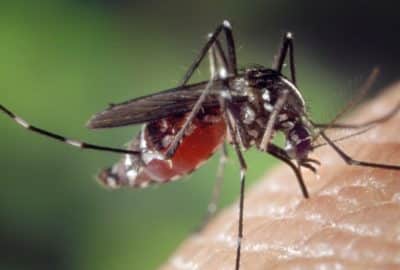Why is my bottle cap attached to my plastic bottle?
Wednesday 22nd Jan 2025, 12.30pm
Whether it’s the bottle of water that you hastily grab at the train station, or your favourite guilty-pleasure fizzy pop, you may have noticed something different about your drinks lately – or at least their containers. Since July 2024, it’s been EU law that bottle caps are attached, or ‘tethered’, on all single-use plastic bottles. But what exactly is the reason for this change? Will it really help to save the planet, or is it just there to annoy us? We chat to Dr Diogo Veríssimo about “nudge”, “sludge”, and changing human behaviour for a better world.
Emily Elias: OK, if you go and buy a bottle of pop in the UK, you will notice that the cap doesn’t quite detach the same way.
All of a sudden, overnight, it feels like our bottle caps and our pop bottles became fused together in a really, really annoying way. On this episode of the Oxford Sparks Big Questions Podcast, we’re asking ‘Why is my bottle cap attached to my plastic bottle?’
Hello, I’m Emily Elias and this is the show where we seek out the brightest minds at the University of Oxford and we ask them the big questions. And for this one, we have found a researcher who’s ready to break down the behavioural change experiment we are all inside.
Diogo Veríssimo: So my name is Diogo Veríssimo, I’m a research fellow at the Department of Biology at the University of Oxford, and my work focuses on understanding people’s behaviour and trying to influence it so that it’s more environmentally friendly.
Emily: OK, so you are the perfect person then to talk about this long-standing frustration I’ve been having, well long-standing, I should say, I feel like it happened overnight. Why is my pop bottle and the bottle cap fused together?
Diogo: In essence, I think it’s worth thinking about what happens after the cap comes off, right? So, you know, we just purchased a beverage of some kind, you open it, you now have two separate pieces of plastic – a bottle and a cap.
What happens to those things after we’re done with the and you know, if we have two separate items, it is more likely that, particularly the smaller one, will get lost and end up in nature somewhere. You know this garbage patches that we find in the ocean, right is very, very large, you know surfaces of are our ocean that are just covered in trash and plastic is a very big part of it. Rather than a recycling plant or a, you know, landfill or somewhere else where it’s better placed let’s say.
Emily: OK, so when did this happen?
Diogo: It’s very recent change, yes. So it’s a EU change, policy change, that basically says that manufacturers have to have the caps attached to the bottle. So it’s, you know, in spite of Brexit, it also impacts the UK because Europe is a very big market. And so it it’s harder for manufacturers to be doing things just for the UK. And so you sort of go with the flow.
Emily: So, OK, the plastic bottle and the bottle cap are now attached to try to combat ocean plastic. I mean, how big is an issue that we had to have the bottle and the cap fuse together?
Diogo: When we when we talk about plastic out there in the ocean, of course, it’s not as if every single bit of plastic out there are just bottles and caps, but bottles and caps are probably about maybe 10% of the plastic we find out there. So not the majority, but still pretty substantial. And of course, you know, at the end of the day, I’m confident people will be able to adapt to just drink their drinks a little bit differently. And if we can then have a reduction of that 10% to be something considerably smaller than I think it could really be a small, a small cost, for a pretty substantial benefit.
Emily: So by putting the cap on the bottle, I feel like I’m a bad person because I definitely muscle man my way to detach it because I find it annoying. Does attaching the cap to the bottle like actually create a behavioural change in people that they’ll just leave the cap on the bottle?
Diogo: When you think about influencing behaviour, that’s really sort of two ways that we can think about it. So to take the bottle and the cap example, we could try to motivate people to make sure that they dispose of them together, for example, right, so by changing social norms, for example, which are these concepts that we have about what we think others think is the right thing to do, for example, or what’s acceptable within our, you know, social group, right? So, we could try to influence that and get people to be more motivated to say recycle more or, you know, always dispose of their plastic in the best way. So that’s one route.
But it’s difficult. It’s difficult because there’s of course lots of demands on people’s attention on people’s, you know, motivation, people’s energy, and sometimes, yeah, we don’t really get as far as we would like. So another route, and I should point out that one does not exclude the other, we can probably you know we should be using both, is to just change the way that for example the bottles and the caps are so that such that we have to make less effort to not dispose of them correctly, right? So now it’s the other way around, right. So, if you want to separate them, you actually have to take the extra step right so that it requires additional effort on your end to separate them.
So we sort of swapped the sort of starting point.
Emily: Does that have like a name or a theory attached to it?
Diogo: Yeah. Yeah. So I mean that that’s one way we can think about it is this word, nudge. Nudges are all about making it easy for people to make a choice that is, you know, good for the environment or good for us as a society, right?
Whereas sludge is really about trying to make it harder for to make for people to make choices are harmful for us, as you know, humans or nature more broadly.
So in this case, for example with this bottle cap and the bottle we had a situation where you know making it harder for the bottle and the cap to be detached and so becoming two different, you know, bits of litter and so that’s in this case ‘sludge’.
Emily: That’s sludge. We’re sludging it up. I’m making it hard for you to man handle that bottle cap off the bottle for you to take a sip.
Diogo: Exactly. Yeah, that’s it.
Emily: So then what’s ‘nudge’?
Diogo: So nudge in this case would be to make it to make it easier for us to make a choice that is, you know, environmentally friendly. So we could be, for example, refund if they pick a glass bottle for example, right. So if they have a, if they choose that, they might have a bottle refund. So this this is something that some countries do where you can return your glass bottle for your beverage and you get a refund back, so that would be that would be make it easier to return it. So that’s a nudge in in that case. So of course in some context nudge and sludge might work, might be more optimal, even though we shouldn’t really think about them as sort of necessarily alternatives, right? They can be used together and often we would expect impact to be greater if they are used together.
Emily: So you study behavioural change nudge versus sludge. Is one better than the other or… is it really just sort of like a giant guessing game of what happens to work best to change people’s behaviour?
Diogo: So largely depends on the issue that we’re interested in. It depends on the context and the situation, which I know is not a very, you know, very exciting answer, but there’s certainly a lot of experimentation when we talk about influencing people’s behaviour, right, you know, it’s often really difficult to predict what will happen. Our behaviours are really complex, we live complicated lives, lots of different demands and things trying to push and pull us all the time.
So very often it’s about trying it out, experimentation and, you know, one thing that it’s clear is that with a bottle and the cap, we don’t really have at this point, data on, you know, what happens is it has it been as positive as we think it is? You know, theoretically? We don’t know very much like for example plastic tax or the five pence you pay per bag at supermarket. It took us a while to figure out exactly what was the impact of that and it turned out to be, you know, pretty positive. Of course not. It’s hard to find something that has only positive impacts, but largely mostly positive in terms of reducing the amount of plastic that is used.
Emily: So in this great big experiment of attaching bottle caps to bottles, how would we know if it is successful? Is there some sort of like metric that we can like go? ‘Yay, less plastic bottle caps in the ocean, we did it’. Like is there anything that you can look at?
Diogo: So of course, I mean there’s sort of two ways to think about it. One is for example the amount of bottle caps that we get in our waste management sort of system, right, in terms of recycling, that’s one. And that’s sort of a little bit easier to measure.
The other thing ultimately, that we want to do is we want to reduce the amount of bottle caps that we find out there in the ocean, right. There is a lot of citizen science, for example, that is done on what trash is found in our beaches around the world, right. And we know that bottle caps are one of the most common things that people find, and so having that reduced over time, for example, will also be a positive sign. But of course, when we talk about measurement doing measurement out there, in the, you know, in the ocean for example, of course there’s lots of different things that influence, you know, how we see plastics out there.
So that becomes a little bit more complex, right? So I would say that if you want to evaluate something like this, one thing we could do is just simply look at our trash and see if we, are we getting more bottle caps now than we were in the past. Because likely, a lot of the bottle caps in the past would end up somewhere in nature.
Emily: Obviously, this is an example of like, behavioural change, of trying to do something to make humans change how they behave with the environment. You’re clearly not spending your life worrying about plastic bottle caps and bottles. What are you working on?
Diogo: [***] Basically actually started for the first time doing some work on plastics, and I think that was where some of this interest comes from. But one thing I’m very excited about and I invest some of my time on is this behaviour change task force and it’s part of the International Union for the Conservation of Nature. Which is a group of specialists from all over the world who share this interest on influencing human behaviour and really want to push forward this, the user behavioural science, to reduce threats to nature. Because, you know, at the end, you know, conservation is it’s all about human persuasion and so I think there’s a lot that we still can do to improve the way we manage our natural world that actually has to do with people, and less with lions and elephants and whales.
But really what we are hoping to kick off now is really focused on learning and capacity building. So we’re hoping to use the Internet to really provide resources to different people around the world working in different countries in different languages to really build their knowledge around user behavioural science to help biodiversity. So I think that’s going to be our big focus probably for the next few years.
Emily: So it’s a lot of sludge and nudge.
Diogo: There will probably be some sludging and some nudging, yes.
Emily: This podcast was brought to you by Oxford Sparks from the University of Oxford with music by John Lyons and a special thanks to Diogo Veríssimo. Tell us what you think about this podcast. We are on the Internet at Oxford Sparks or you can go to our website oxfordsparks.ox.ac.uk and you can ask us your burning questions, pop bottle related or not.
I’m Emily Elias. Bye for now.





